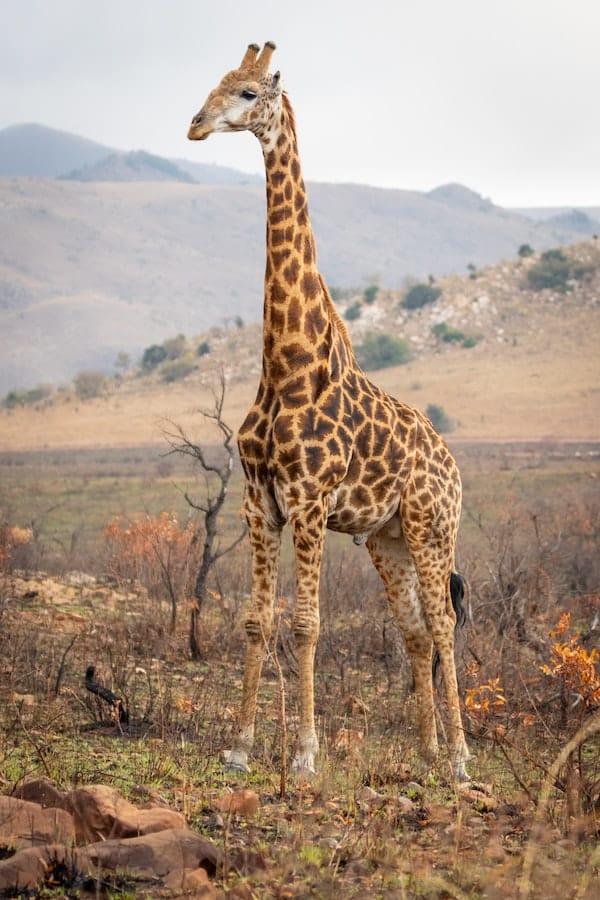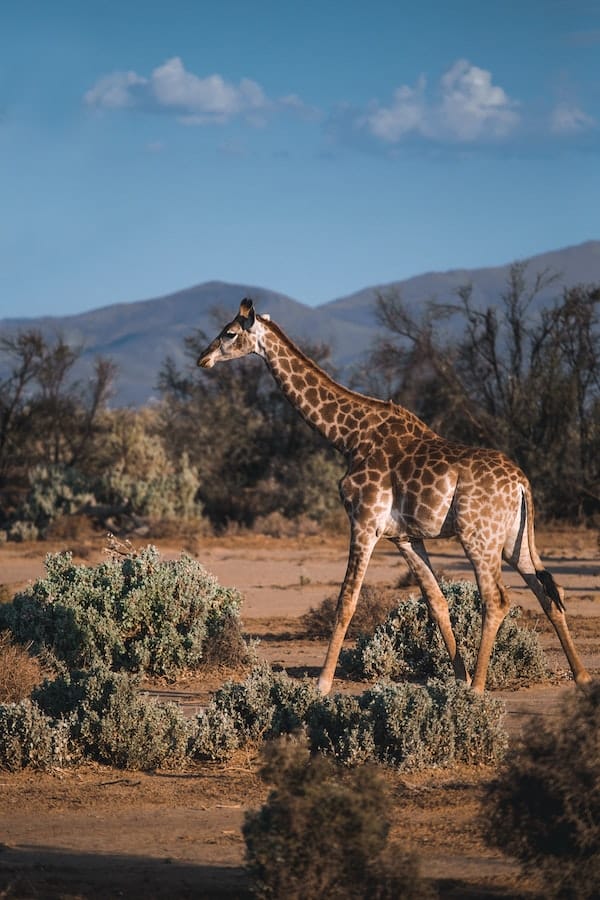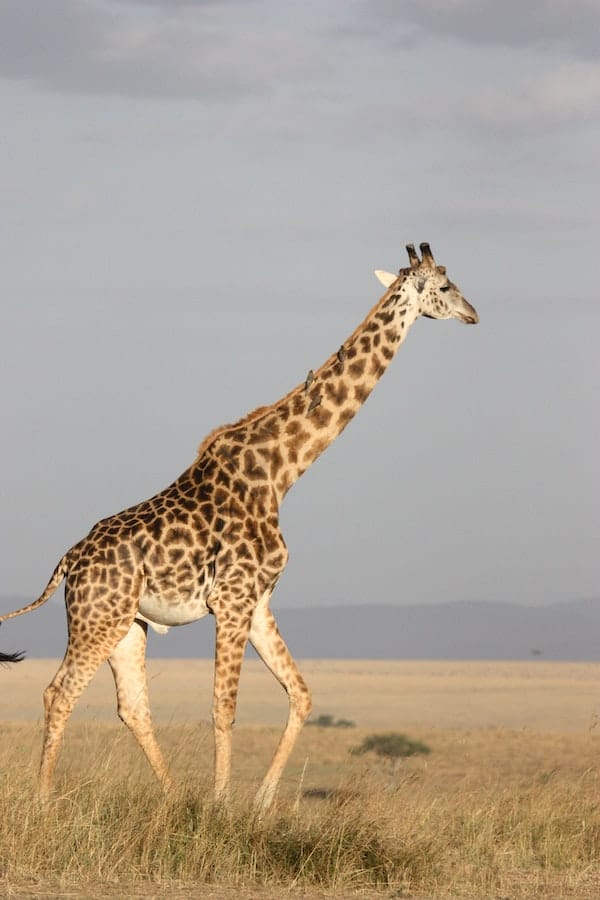
Giraffes are one of the most fascinating and majestic creatures on earth.
These towering animals are known for their long necks, distinctive spotted coats, and graceful movements.
With their unique features and adaptability to various environments, giraffes have become a favorite among lovers and zoologists alike.
Here are just a few interesting facts about these incredible animals.
Fact #1: Giraffes are the tallest animals in the world.
Giraffes are truly a marvel of nature, standing up to 20 feet tall and weighing over 2,000 pounds.
With their long necks and gangly legs, these majestic animals tower over most other species on earth.
They have long been considered the tallest land animals in the world, outranking even the impressive African elephants.
Fact #2: A giraffe’s neck can be up to 8 feet long.
One of the fascinating things about giraffes is their long, slender necks, which can be up to 8 feet in length.
This incredible feature allows giraffes to easily browse on trees and other tall vegetation, as well as see over long distances to spot potential predators or sources of food.
Additionally, the long neck helps giraffes maintain their balance, especially in the face of strong winds.
With their long necks and distinctive spotted coats, giraffes truly are one of the most majestic animals on earth.
Fact #3: Giraffes can run as fast as 35 miles per hour.

One of the most incredible things about giraffes is their incredible speed and agility.
These majestic animals can run up to 35 miles per hour, making them one of the fastest land animals in the world.
Their long legs and lean build allow them to easily reach top speeds, allowing them to outrun potential predators or escape from other dangers.
Fact #4: Giraffes are native to Africa.
Giraffes are native to Africa, the vast continent-spanning much of the southern portion of the continent.
These large and majestic animals are found throughout much of sub-Saharan Africa, inhabiting grasslands, woodlands, savannas, and other environments.
With their long necks and distinctive spotted coats, giraffes have become an iconic part of Africa’s diverse wildlife.
Fact #5: Giraffes can go days without water.
Despite their long necks, giraffes are surprisingly adaptable when it comes to finding sources of water.
These large animals can go for several days without drinking water, relying on the moisture from their food and other sources to keep them hydrated.
This ability to go without water for long periods of time makes giraffes well-suited for life in the dry, arid regions of Africa.
Fact #6: Giraffes are herbivores.
One of the most surprising facts about giraffes is that these majestic animals are strictly herbivorous, meaning that they don’t eat meat.
Instead, giraffes feed on a wide variety of plant matter, including grasses, leaves, and fruits.
With their long necks and specialized mouths, giraffes are able to easily browse various types of vegetation that would otherwise be out of reach for other animals.
Fact #7: There are nine different species of giraffe.
There are nine different species of giraffe, each with unique physical characteristics and behaviors.
Some of the most common types of giraffes include the reticulated giraffe, Masai giraffe, South African giraffe, Angolan giraffe, and Rothschild’s giraffe.
Each of these species has evolved to thrive in its native habitats across Africa, from grasslands and woodlands to savannas and other arid environments.
Fact #8: A giraffe’s tongue can be up to 21 inches long.

One of the most surprising facts about giraffes is their incredibly long tongues, which can be up to 21 inches in length.
This specialized feature allows giraffes to easily feed on vegetation that would otherwise be out of reach for other animals, such as grasses and leaves.
With their extremely flexible tongues and strong jaws, giraffes can forage on a wide variety of plant matter easily.
In addition, the long tongue also helps giraffes keep their large, heavy heads balanced and steady when they are moving around.
Fact #9: Giraffes have no vocal cords.
One of the most surprising facts about giraffes is that they cannot make any sounds other than a grunt or a cough.
This uniqueness makes them distinct from many other animals, who are typically able to communicate vocally with each.
Instead, giraffes rely primarily on nonverbal communication methods, such as body language and visual cues.
Fact #10: Giraffes only sleep for about 30 minutes a day.
Giraffes are known for their long necks, but what many people don’t realize is that these majestic animals only sleep for about 30 minutes each day.
This relatively short amount of sleep makes sense when you consider the fact that giraffes spend most of their time roaming around the African savannas and grasslands where they live, searching for food and water and avoiding predators.
Fact #11: Giraffes have four stomachs.
One of the most interesting facts about giraffes is that they have four stomachs, which help them to digest their food properly.
This specialized digestive system enables giraffes to efficiently process the tough plant matter that they eat, such as grasses and leaves.
It also helps them to extract all of the vital nutrients from their food sources, keeping them strong and healthy.
Fact #12: A group of giraffes is called a tower or a herd.
A group of giraffes is called either a tower or a herd, depending on the context.
These large animals are normally found in herds, which typically consist of several individuals of the same species.
However, when groups of giraffes get very large and spread out across a wide area, they may be referred to as towers.
Both of these terms reflect the majestic nature of these animals, as well as their social nature and a strong sense of community.
Fact #13: Male giraffes use their necks as weapons.

Male giraffes use their long, powerful necks as weapons in fights with other males over territory or potential mates.
These battles can be quite fierce, as the competing males will often viciously strike at each other using their horns and hooves.
In order to defend their territories from intruders and attract potential mates, male giraffes will often use their long necks to intimidate and frighten off other males.
Fact #14: The average lifespan of a giraffe
The average lifespan of a giraffe is about 25 years in the wild and up to 40 years in captivity.
This long lifespan is due in part to the many natural adaptations that giraffes have evolved over time, including their large size, strong legs, and tough hooves.
In addition, these animals also tend to be relatively resistant to disease and other health problems, allowing them to live long and healthy lives.
Overall, there are many interesting facts about giraffes that make these animals truly unique and fascinating.
Whether you’re interested in their long necks, specialized tongues, or social nature, learning more about giraffes is sure to spark your curiosity and inspire a love of these iconic African creatures.
And if you are looking for names, you can check our complete giraffe names.


GIPHY App Key not set. Please check settings